Rebecca Mitchell, Headmistress at Heywood Prep, explains what we teach in early maths and why we don’t teach it like they used to.
The fact that children are taught maths differently today is hugely beneficial. Developing children’s conceptual understanding of number, rather than simply following processes, gives them a deep understanding of number and the structure and connections within mathematics. Successful early teaching of number skills encourages children to believe they can succeed with maths and even that they might enjoy it!
Children are taught fluency; they are able to efficiently recall facts and processes, and are able to apply these to a range of scenarios. In order to aid children’s understanding, concrete resources, along with pictorial and abstract representations, help to illustrate key mathematical ideas. In addition, reasoning is a key part of embedding mathematical thinking – if children are to understand deeply, ideas must be reasoned and discussed with others.
Maths teaching begins in the nursery and pre-school classes, with play-based exposure to number and calculation. Having a solid base to build upon is essential – rocky foundations quickly undermine a child’s confidence in their mathematical ability. In Reception, teachers continue with a play-based approach to learning and lay the foundations for all of the maths the children will encounter as they progress through the primary phase.
Children understand what each number means – what does 6 look like? Not just the numeral, but the quantity – they learn to recognise 6 spots, 3 cars, 2 pens, without counting. They also learn that 6 can be shared equally because it’s an even number and that 7 can be shared with one left over. They learn number facts, and this is where the real magic begins – the key to children’s ability to calculate and manipulate numbers in their heads that continues throughout the 4-7 age range and beyond.
One of the key concepts Reception children learn are number bonds to 10 and also bonds to 20. These simple number facts that children commit to memory are built upon as they head into Year 1 and open up a whole new world of calculation:
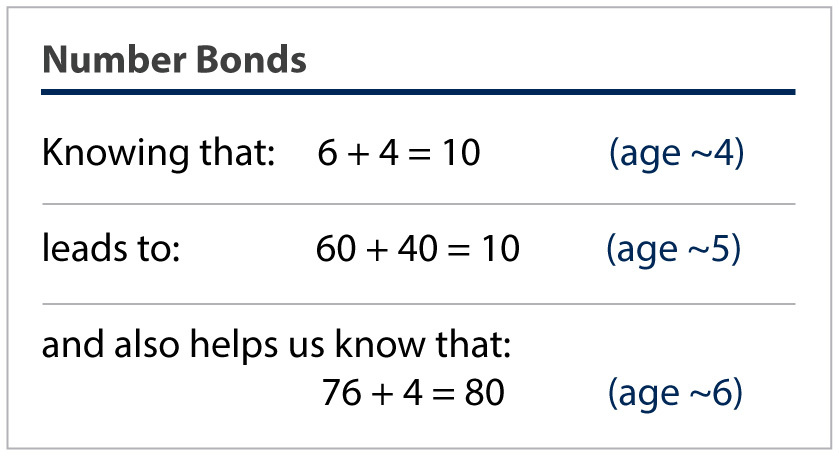
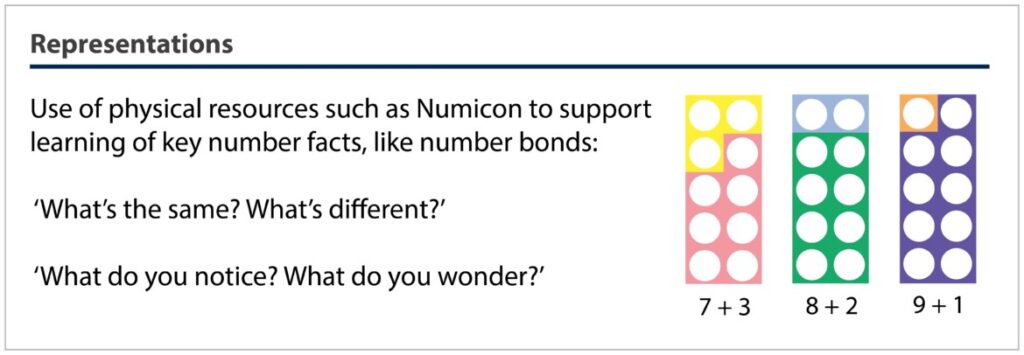
In Year 1, children are also taught the commutative property of number facts. Knowing just one ‘number sentence’ enables the children to know three more:
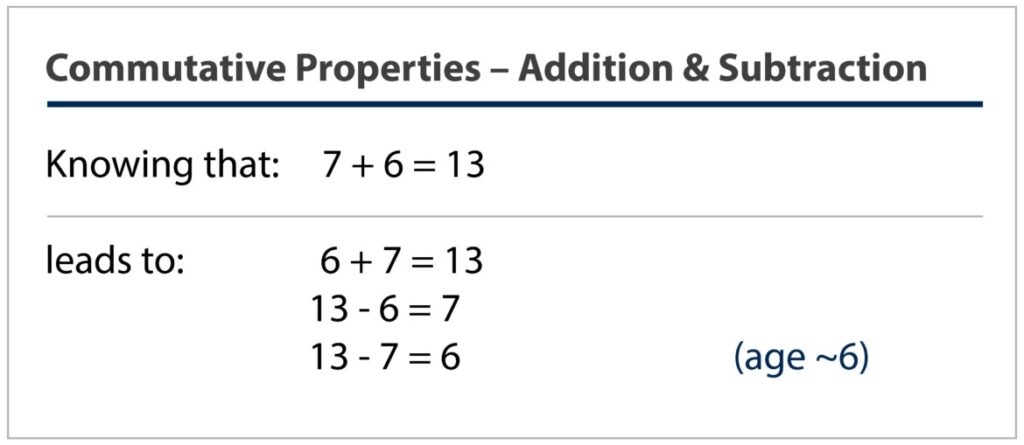
Additionally, children in Year 1 are taught various strategies for addition and subtraction (none of which involve pencil and paper!). Examples of addition strategies are given below:
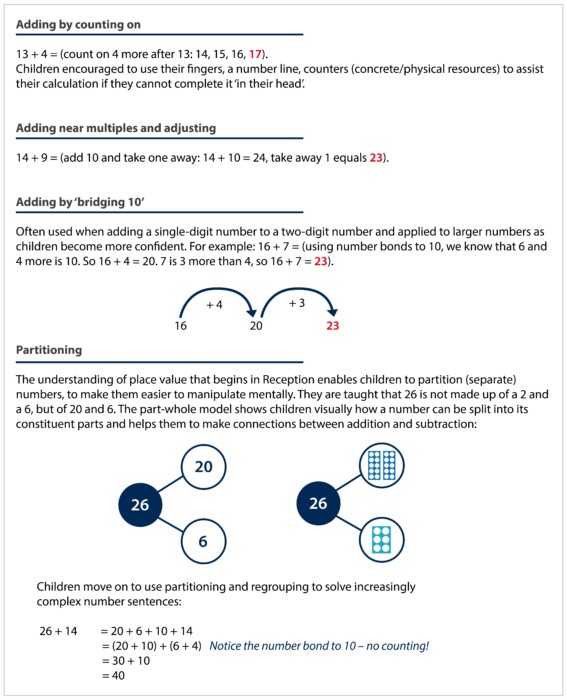
Multiplication is typically introduced by Year 2 and is explained to children using ‘multiplication arrays’ and repeated addition. This helps to provide a visual representation of the calculation:
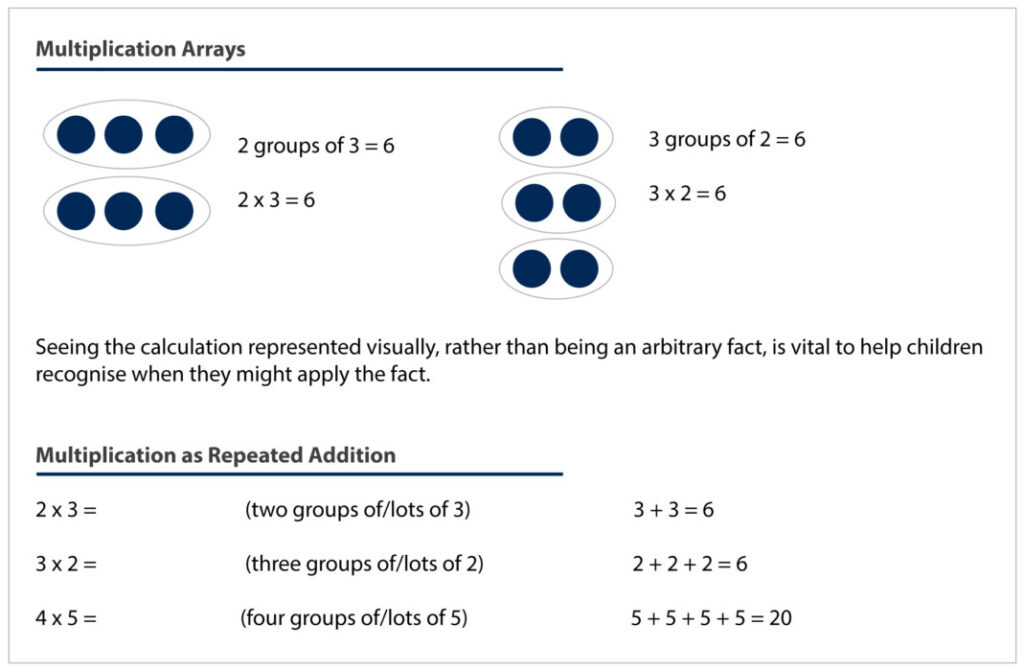
By Year 2, children know the commutative properties of addition and subtraction. Building on this experience, together with their understanding of multiplication arrays, in Year 2 they are also introduced to the commutative properties of multiplication and division:
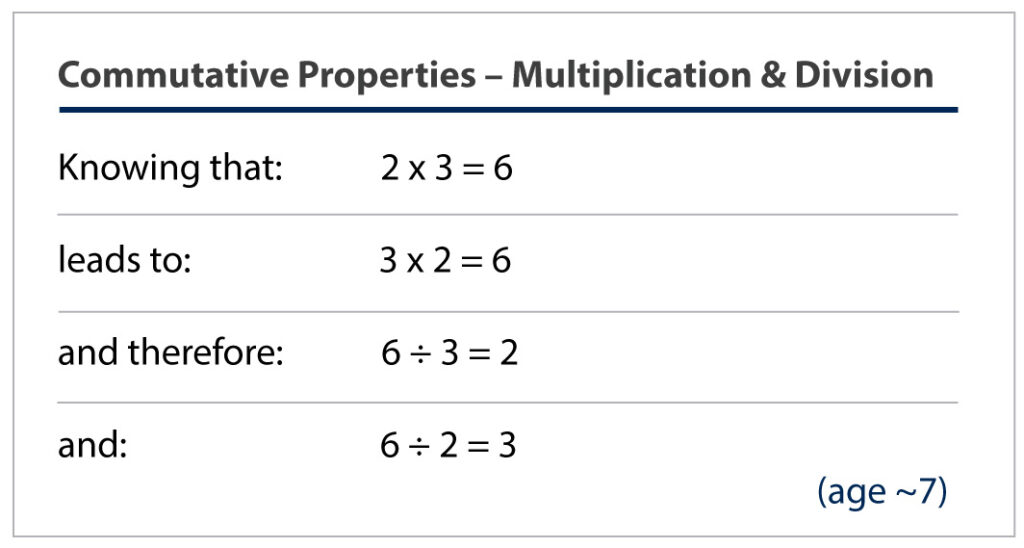
And so, along with many other calculation strategies that they will be taught, children reach Year 2 without a single formal written method of calculation, which is what unsettles many parents who were taught to set out simple addition using traditional column addition.
Using their skills in partitioning and recombining, and knowledge of place value, children can calculate in their head instead, offering them speed, fluency and accuracy in their calculation. We use these mental strategies in our heads often as adults. Our experience with number has taught us that 60 + 40 = 100 and thus we know that 600 + 400 = 1000 and 1000 – 600 = 400. But children today are taught these explicit mental calculation strategies and basic facts to help them on their way.
Here, I have only touched on a few of the strategies that children are taught, but this robust and in-depth understanding of number is the springboard to children being able to manipulate larger numbers and more complex calculations in the years to come.
At Heywood Prep, we are committed to supporting parents to be a part of their child’s learning journey. Understanding how we teach, as well as why we teach in a particular way, is so helpful to parents. Our Head of Maths, Sarah Gilmore, runs regular maths workshops for parents that are open to the whole community, in which she models the calculation strategies throughout the school for parents. The next information evening is scheduled for the summer term – I hope to see you there!


